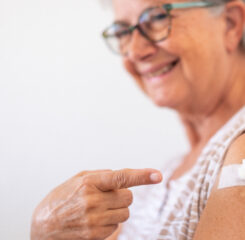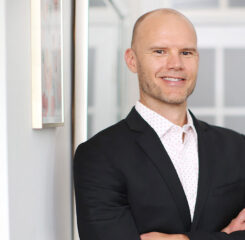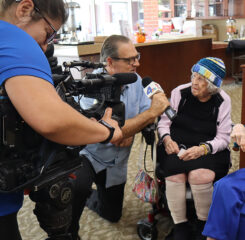Combining Technology and Wellness in Affordable Housing
A pair of LeadingAge members in New Jersey have created a partnership to boost the wellness of low-income older adults in affordable housing communities.
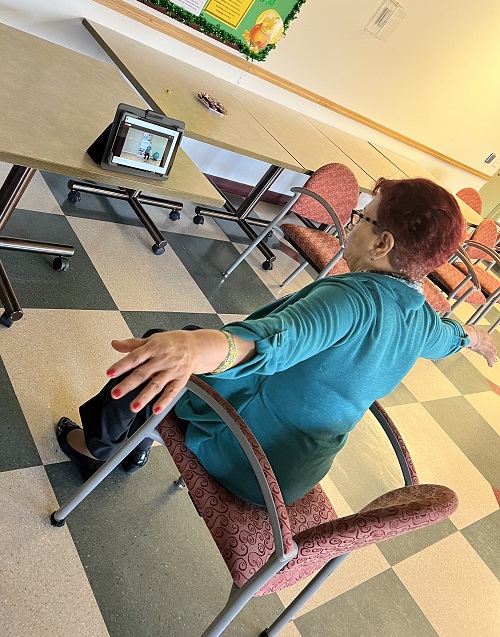
Parker Health Group and Springpoint launched their Affordable Housing Wellness Initiative in June, a three-year pilot that began in four of Springpoint’s affordable housing communities but can later be expanded to all 19.
The program grew out of a 2020 survey of residents about their service and technology needs. It showed that over 40% of residents lacked sufficient internet access, which made remote engagement difficult during the pandemic. The negative effects of isolation were particularly difficult for residents who are 80-plus years old.
Springpoint’s whole-person wellness program, LivWell, is the foundation of the initiative, along with a significant investment in technology: a communication platform and tablets available for loan to residents. Parker and Springpoint are jointly funding the program, and sharing the program evaluation process.
LivWell (video link) has been operating in eight Springpoint life plan communities for a decade. “LivWell […] supports a high quality of life, personal choice, lifelong development, and an optimal sense of well-being,” says Stacey Judge, LivWell program director at Springpoint. “Staff members work collaboratively across departments based on residents’ wants, needs, and personal goals. Residents are also part of the LivWell team; they play a key role in bringing new program development ideas to their community,” she adds.
LivWell uses a whole-person wellness model that includes seven dimensions of wellness: physical, emotional, social, intellectual, vocational, environmental, and spiritual. The program includes individual assessments, goal setting, and outcomes tracking for participants. The Affordable Housing Wellness Initiative includes evidence-based programs focused on fall prevention, fitness and balance, health education, nutrition, brain fitness, and stress reduction.
Access to Technology and Improved Broadband
The providers are partnering with Touchtown for the digital communication platform, which allows groups of residents to participate. The providers are also purchasing LG tablets for those residents who need or want to participate virtually, and all classes are available on demand via the LivWell channel.
Wi-Fi is installed or upgraded as needed to allow free access for all residents in their apartments. Springpoint and Parker did not face the equipment and chip shortages that affected other providers with broadband access programs, but staffing shortages did affect the speed of Wi-Fi installations in some places.
“Wi-Fi is an enabler that makes this and many other innovative programs and services possible. No longer thought of as an amenity in communities, it’s now a necessity and should be viewed as a utility just like any other,” says Judy Collett-Miller, director of business development and technology innovation at Parker. Along with LeadingAge and affordable housing providers across the country, Parker advocates for funding to increase connectivity in HUD multi-family housing, including installation costs and ongoing internet service fees.
Better Health and Social Engagement
Parker and Springpoint are collecting data on engagement, reduced falls, resident life satisfaction, and overall well-being, plus functional fitness scores. These factors, along with resident qualitative data, will be considered in the evaluation process. The goal is to demonstrate a replicable model for integrating wellness into older adult housing.
Since the program was launched in phases, the four communities are now in different stages. There are 95 members enrolled between the four, and two communities have reached the six-month reassessment mark. In the latter two communities, 35% of the resident population is enrolled.
The resident feedback during the 6 month re-assessments is positive. Comments include: “Mood is better; feel healthier; increased social interaction; something new to do.” Judge tells the story of one member who at first said, “I don’t exercise, I haven’t had anything to do with exercise, but I will join the program to have something to do.” After attending regularly, this resident improved in each category of the senior fitness test–flexibility, lower body strength, cardiovascular endurance, balance, and agility.
According to Judge, “Seeing improvements in physical measurements is helping to keep residents motivated to exercise, both in person and with the tablet, and that is so important for an older adult who may have thought exercise wouldn’t make a difference due to age or pre-existing conditions.” She adds that other resident comments underscore the importance of human connections and social engagement.
Do you have a story of innovation to tell? The LeadingAge Story Collector, powered by Greystone, makes it easy to submit yours. Try it now.
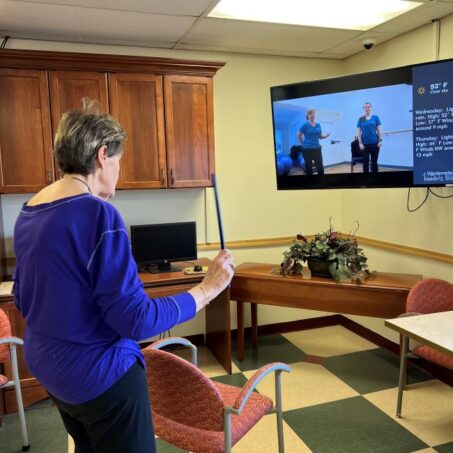
Most Recommended
November 08, 2024
 HOTMA: New Rules for Housing
HOTMA: New Rules for Housing
November 06, 2024
 Colleagues on the Move, November 6, 2024
Colleagues on the Move, November 6, 2024
November 06, 2024
 Analysis: What Does the Final CY2025 Home Health Rule Include?
Analysis: What Does the Final CY2025 Home Health Rule Include?
October 29, 2024
Katie Smith Sloan Urges Members to Build a Movement, Take Action
Recently Added
December 12, 2024
HUD Releases 2025 Operating Cost Adjustment Factors
December 10, 2024

